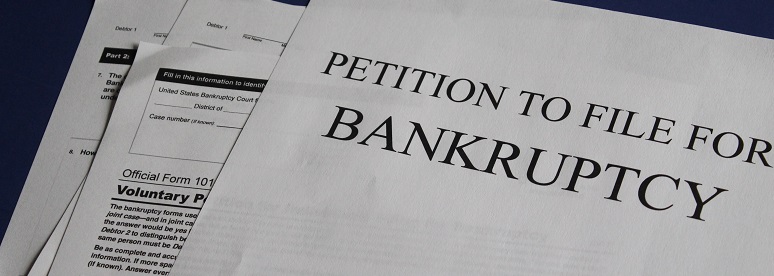
It’s not the easiest topic we cover, but we know foreclosure sales will be on the uptrend as the U.S. works for financial recovery from a global public health crisis. Many readers are currently stretched thin by their mortgage obligations combined with other debts. For some, the financial stress will be overwhelming. If any helpful arrangements offered by the government or the lender cannot be sustained, homes can ultimately be taken back by the lending banks.
Under your mortgage agreement, your home is collateral in case you stop repaying the loan. So, in a default situation, a lender will follow the process agreed upon in the contract, in order to sell the house and use the sale proceeds to pay the loan debt and the administrative costs of foreclosure. Many people are anticipating that possibility, depending on how feasible it is for them to adjust to our abruptly changed economy.
For the owner motivated to keep the house, can filing for bankruptcy help? It can, if the homeowner has a regular source of income. Let’s look at how this works.
But First, Forbearance.
In 2020, the government pressed the pause button on foreclosures for homeowners with loans backed by Freddie Mac and Fannie Mae, as well as the FHA and other federal agencies. Homeowners are eligible for relief under the Coronavirus Aid, Relief and Economic Security (CARES) Act, as long as they have asked their lenders to put payments on hold under the federal forbearance provisions. There are some non-federal foreclosure moratoriums too.
So, the first thing to do — whether or not the pandemic is the reason for your inability to cover your monthly mortgage payments — is to make a call to your mortgage servicer, and find out if forbearance or a loan modification is possible to obtain from the financial institution that holds your mortgage.
Forbearance does not forgive debt; it simply buys time. If you can defer payments, also ask if you’re responsible for escrow or interest payments during the hold. And do find out how the debt must be dealt with at the end of the holding pattern. Fortunately, lenders will not require a lump-sum catch-up payment at the end, but you’ll need to know and prepare for the terms they will impose.
If Forbearance Runs Out or Isn’t an Option, Bankruptcy May Help You.
Filing a bankruptcy petition can stop a foreclosure in its tracks. Time is of the essence, as most lenders initiate the foreclosure process once mortgage payments get behind by two to three months (when a forbearance period is not in effect). Before this happens, the homeowner may consider a short sale, or selling the home through a deed in lieu of foreclosure.
☛ See more information from Deeds.com about alternatives to foreclosures, such as proceeding with a short sale, or selling the home through a deed in lieu of foreclosure.

If you are motivated to keep the home and can afford the option, you can keep a home though a bankruptcy provision — specifically, Chapter 13. While Chapter 11 of the Bankruptcy Code is commonly used by businesses, Chapter 13 is best for individual homeowners or co-owning couples who have not had any court-dismissed bankruptcy filings in the most recent year.
Chapter 13 was formulated to help people shield their valuables from liquidation and get a fresh start.
How Does Chapter 13 Bankruptcy Play Out?
File for Chapter 13 bankruptcy, and the court issues an Order for Relief, triggering the “automatic stay” that prevents foreclosure. Within some limits, the stay issued by a bankruptcy court allows the owner to catch up on overdue debts, interest-free.
To file, you must be drawing a regular income (this can be income from self-employment) and your debts must be below the cap set forth in the Bankruptcy Code. The cap is adjusted every three years. You must file a detailed, three-year plan (which can be extended to five years) within 15 days of filing the petition, unless there is a reason for a delay and court agrees to extends the deadline for receiving the plan.
In your plan, you will lay out what you can afford. You’ll pass your disposable income to a trustee. You will not be permitted to borrow money in any substantial amounts without the court’s say-so.
Throughout the plan and beyond, your mortgage, which is secured debt, continues. But when the plan concludes, all your remaining unsecured debt will be discharged. Depending on your situation, you might be relieved of second or third mortgage liens or deeds of trust. In Chapter 13, the court can deem them unsecured debt, which is last in priority and might be discharged. This can happen if there is not enough home equity left after the first mortgage to secure others.
Bottom line: If you have enough income to cover your basic expenses and continue to pay your mortgage, and if you follow the trustee’s rules, you will avert foreclosure and keep the house.
Can the Lender Override Your Plan?
In Chapter 13, creditors do not have authority to oversee or reject your plan. The lending institution can ask the court to dismiss your filing for several reasons, but your case will likely proceed if:
- You have equity in the property facing foreclosure.
- Your filing is part of a good-faith effort to repay, not delay.
- Your statements to the court are true.
Should the court approve a lender’s motion to lift the stay and proceed with foreclosure sale, you’ll still have gained at least a couple of months to avert a sale.
What About Chapter 7?
Chapter 7 is useful for people who don’t earn more income than their state’s median, whose income is too low to pay into a plan, and whose consumer debts amount to more than Chapter 13’s debt cap. A Chapter 7 petition will actually wipe out the mortgage and other debt.
Here’s the rub. Chapter 7 might delay the foreclosure, but it will leave the mortgage lien on the house. This means you will have to surrender or lose the house, unless the lender agrees to work with you in some other way. The Chapter 7 trustee’s role is to liquidate assets — not to help you get on track to save them.
For the Best of Success, Seek Legal Advice, and Act Promptly.
A foreclosure will put a serious dent in your credit profile and make it very hard to get a mortgage later on. A bankruptcy also has a serious impact, but if you can keep your home, you may not have the need to seek a mortgage approval later on, and the partial discharge of other debts can make it possible to get back on track and gradually improve your credit. That said, bankruptcy and foreclosure have complicated effects, and it is very important to talk with an attorney experienced in this area of law before you choose or rule out any option. The attorney will understand your financial limits, and explain the available methods of covering your legal fees.
Making this decision is a matter of taking charge and actively regaining your financial footing. The worst thing you can do is to put off action. If the mortgage lender sends a notice of default, seek legal advice. Wait too long to file a bankruptcy petition, and the lender could ask the court to lift the stay and continue with the foreclosure.
Note that significant and recent changes in the law impact the Bankruptcy Code. Law and policy related to liens also vary by state. Additionally, everyone has a unique blend of circumstances. For all of these reasons, neither Deeds.com nor any other website can offer legal advice, and this article should not be taken as legal advice. In a matter so complex and impactful as bankruptcy, a consultation with an experienced attorney in your state is necessary.
Supporting References and Further Reading
FindLaw: Foreclosure? How Bankruptcy Can Help (July 2018).
Jacinta Epting, Attorneys’ Title Guaranty Fund, Inc. (ATG®): The Interaction Between Bankruptcy and Foreclosure Law, Casenotes & Underwriters’ Bulletin.
Andriana Glover, Emory Bankruptcy Developments Journal: The “Cure” to the Homeowner’s Bankruptcy Blues: An Analysis of a Homeowner’s Ability to Cure His Mortgage Default under § 1322(b)(5) of the Bankruptcy Code.
MJM Bankruptcy Law: Filing Bankruptcy Can Stop a Foreclosure Sale.
Photo credits: Melinda Gimpel and Regina Tholen, via Unsplash.
